SEPTEMBER HOME SALES AND PRICE REPORT
 By C.A.R., LOS ANGELES (October 18)
By C.A.R., LOS ANGELES (October 18)
Following a brief sales bounce back in August, rapidly rising mortgage rates slowed California home sales in September and resumed the month-to-month declining trend that began in the spring, the CALIFORNIA ASSOCIATION OF REALTORS® (C.A.R.) said today. Infographic: https://www.car.org/Global/Infographics/2022-09-Sales-and-Price
Closed escrow sales of existing, single-family detached homes in California totaled a seasonally adjusted annualized rate of 305,680 in September, according to information collected by C.A.R. from more than 90 local REALTOR® associations and MLSs statewide. The statewide annualized sales figure represents what would be the total number of homes sold during 2022 if sales maintained the September pace throughout the year. It is adjusted to account for seasonal factors that typically influence home sales. September’s sales pace was down 2.5 percent on a monthly basis from 313,540 in August and down 30.2 percent from a year ago, when 438,190 homes were sold on an annualized basis.
Home sales have dipped for 15 straight months on a year-over-year basis, and it was the second time in the last three months that sales dropped more than 30 percent from the year-ago level. The monthly 2.5 percent sales decrease was worse than the long-run average of 0 percent change recorded between an August and a September in the past 43 years. Sales in all price segments continued to drop by 25 percent or more year-over-year, with the sub-$300k price range falling the most at 36.7 percent. Sales of million-dollar homes fell by double-digits again for the fourth consecutive month, with the high-end market segment dipping 25.6 percent from the same month last year.
“With interest rates rising rapidly since the beginning of the year, buyers and sellers are having difficulties adapting to the market’s new ‘normal,’” said C.A.R. President Otto Catrina, a Bay Area real estate broker and REALTOR®. “As the market continues to evolve in the next 12-18 months, REALTORS® will be playing an ever-more important role as trusted advisors to guide their clients through the complicated buying and selling process and help them overcome their obstacles during these challenging times.”

The statewide median home price continued to increase on a year-over-year basis in September, but the growth rate remained very mild compared to those observed earlier this year. At an increase of 1.6 percent year-over-year,

September marked the fourth consecutive month with a single-digit annual increase. The less-than-2-percent growth rate in the statewide median price was much lower than the 6-month average growth rate of 6.7 percent recorded between March 2022 and August 2022. The -2.1 percent month-tomonth decline in September was slightly lower than the long-run average of -1.8 percent recorded between an August and a September in the past 43 years. With mortgage rates rising and the average 30-year FRM approaching 7 percent in the past week, home prices will drop further in the coming months as affordability remains a challenge.
“September’s sales and price declines reaffirm our forecast for next year,” said C.A.R. Vice President and Chief Economist Jordan Levine. “High inflationary pressures will keep mortgage rates elevated, which will reduce homebuyers’ purchasing power and depress housing affordability in the upcoming year. With borrowing costs remaining high in the next 12 months, a pull-back in sales and a downward adjustment in home prices are expected in 2023.”
Other key points from C.A.R.’s September 2022 resale housing report include:
• At the regional level, sales continued to fall sharply from last year, with four of the five major regions falling more than 25 percent from last year. Southern California had the biggest annual drop in sales at 32.6 percent, as every county within the region experienced a sales decline of more than 30 percent in September. The San Francisco Bay Area (-26.6 percent), the Central Valley (-25.9 percent) and the Central Coast (-25.7 percent) also dipped more than 25 percent from last year, as the declines remained consistently high for all three regions. The Far North (-17.7 percent) continued to post the smallest declines of the five major regions, but it also has been dropping by double-digits for four straight months.
• All but three counties tracked by C.A.R. posted sales drops from a year ago. Of the counties that recorded sales drops from last September, 45 of them fell more than 10 percent, and 36 counties plunged more than 20 percent from the same month last year. Mono had the biggest drop in sales at -42.9 percent, followed by Yuba (-41.1 percent), and Sonoma (-38.1 percent). Counties that experienced a sales decline had an average decrease of -25.5 percent in September. Only three counties posted sales increases from last September, with Glenn gaining the most year-over-year at 63.6 percent, followed by Lassen (43.8 percent) and Nevada (6.3 percent). On a year-to-date basis, San Benito had the sharpest decline in sales at -30.9 percent, while Lassen (5.8 percent) had the best sales performance of all counties when compared to last year.
• Nearly two-thirds of all California counties experienced an increase in their median-prices. Prices were up from last year by double-digits in five counties in September, as compared to seven counties in the prior month. Lassen (31.2 percent) recorded the biggest price increase of all counties, followed by Mono (30.8 percent) and Plumas (19.6 percent). The median price in 17 counties dipped from the same month of last year, with Mariposa dropping the most at -25.4 percent. It was also the only county with a double-digit price dip from a year ago. Santa Barbara (-9.5 percent) posted the second largest median price decline, followed by Lake (-8.8 percent) and Amador (-7.5 percent).
• Housing supply in California improved from a year ago and was unchanged in September from the prior month despite a decline in
FALL 2022 CONNECTION NEWSLETTER
West San Gabriel Valley R EALTORS ® Cont’d on page 4
1
EDUCATION SCHEDULE
October 26, 2022 9:00 am - 10:00 am
CRMLS Virtual Training: Down Payment Resource
October 28, 2022 9:00 am - 4:30 pm 8-Hour MLO Live Webinar Continuing Education
November 8, 2022 12:00 pm - 1:00 pm
Commercial Seminar: Know the Law - Commercial NHD Requirements in California

November 9, 2022 1:00 pm - 2:00 pm Learn to Go Savvy from home!
November 11, 2022 9:00 am - 4:30 pm 8-Hour MLO Live Webinar
Education
November 15, 2022 11:00 am - 12:00 pm Meet & Learn: AB38 - Home Hardening.
Know
November 16, 2022 9:00 am - 10:00 am 2CRMLS Virtual Training: List for Success w/CRMLS Matrix
November 22, 2022 9:00 am - 4:30 pm 8-Hour MLO Live Webinar
Education
Visit www.wsgvar.com/events/education-schedule/ for the complete education class schedule.
2
Continuing
What You Need to
Continuing
PAULINE LAM Secretary OFFICERS BRIAN H. CHEN President CECELIA “CYL” RUDAR Vice President LING CHOW President-Elect EARL KNUDSON Treasurer IMMEDIATE PAST PRESIDENT MINDY YEH ASSOCIATION STAFF ALBERT TRAN Chief Executive Officer ANGELICA MORALES Director of Operations PHONG TON Education & Store Manager KAREN SNOW Accountant BELEN BERRIOS Communications & Events Manager MARICRIS BENITEZ Member Support Coordinator TRACY CHEUNG Web & Social Media Coordinator President’s Message 3 Los Angeles County Assessor Hosts Homeowners’ Resource Fair 6 New Action on Housing Affordability 17 Smart Home Security Gets Even Smarter - and Easier 20 California Dream for All Program Update 21 How to Move Past Student Debt and Into a Home 24 City & County Update 32 City Information 35 NEWS & FEATURES SHUN ZHANG TOMAS WONG DIRECTORS MARIAN CAVATAIO LORRAINE CLARK JEFF HUANG NANETTE ONG TOM TSENG
Dear Valued Members,
Welcome to Fall 2022! I hope you had an enjoyable summer and are ready for another exciting quarter of production. I especially want to welcome all new members who have chosen real estate as their career and joined our Association. Their membership makes us stronger. I wish them success in their real estate profession. At the West San Gabriel Valley REALTORS®, we offer a variety of member benefits, ranging from free real estate educational classes to our electronic forms software product – zipForm®.

This year the West San Gabriel Valley REALTORS® has been proud to celebrate our centennial with you, our members. Established in 1922, it is our honor to continue celebrating our 100th anniversary until the end of this year.



Since the last issue of this newsletter, we have accomplished the following:
• Centennial Celebrations
The Centennial Task Force put together two incredible events: the June 15th Centennial Luncheon and the September 1 7th 100th Birthday Celebration Dinner. We had over 300 members participating in these two unforgettable events with the 100th Birthday Celebration, held at the Association Headquarters, alone enjoying over 150 members in attendance. The events’ activities included karaoke, casino, beer pong, dancing, and so much more! We even gave away prizes to many members. Congratulations to all!
• We would like to give special thanks to everyone who made both events such successes: The Centennial Task Force -- Lorraine Clark (Chair), Shun Zhang, Nanette Ong, Yin Bihr, and Sharon Wang -- for putting together this 1920’s themed event
Our 2 002 President, Cecelia Rudar; 2006 President, Carl Feldstein; 2014 President, Mel Wong; and Steve Goetz for sharing their memories of the Association to our members in the “100th Birthday Celebration” video. The eight committees for putting together a “Guess What Committee” video for our members to guess. Congratulations to all Education Committee members whose committee was voted as the winner for best video. It is my honor to have lunch in the next few weeks to celebrate their winning.
• Local Candidates Forum
On September 28, 2022, we conducted a Local Candidates Forum inviting Assemblymember Candidate Burton Brink, five local cities’ elected officials, and three local cities’ council candidates for the upcoming election on November 8th. We like to express our thanks to the following candidates for taking the time to speak at our Association:
Assemblymember Candidate Burton Brink
Alhambra City Councilmember and Candidate Ross Maza
Monterey Park City Council Candidate Jason Ding
Monterey Park City Council Candidate Thomas Wong

Monterey Park City Council Candidate Vinh T. Ngo
San Gabriel City Councilmember and Candidate Carina Rivera
San Gabriel City Councilmember and Candidate John Wu San Gabriel City Council Candidate Reyna Isela Lopez Bowles
Each candidate had two minutes to speak to their constituents about local issues and their future plans after which they had a chance to speak with their constituents and our members.
We like to thank the Legislative Committee, led by Shun Zhang (Chair and Temple City Liaison) and Pauline Lam (Vice Chair and Alhambra City Liaison); Nanette Ong, San Gabriel City Liaison; Tomas Wong, Monterey Park City Liaison; Tom Tseng, Rosemead City Liaison; and its members for putting together this wonderful event.
Don’t forget: November 8th is the Election Day. Please register to vote and go to the poll to vote… Make your voice heard!
Stay tuned for these upcoming events and educational classes:
• Halloween Celebration - October 27, 2022
• Outgoing President Recognition Breakfast - December 1, 2022
• Annual Installation Gala - December 2, 2022
• Annual Holiday Party - December 15, 2022
It was my pleasure serving as your 2022 President. The Association has been growing strong for the last 100 years. Let’s set another milestone: to be even stronger in the next 100 years.
Brian Chen
President

CENTENNIAL PRESIDENT’S FALL 2022 MESSAGE
2022
All articles are informational and are not intended to be a substitute for professional assistances. Consult a professional as needed. Editor • Albert Tran CONNECTION NEWSLETTER FALL 2022 West San Gabriel Valley R EALTORS ® www.wsgvar.com For submissions contact Albert Tran albert@wsgvar.com • 626-288-6212 Production Design • Elisabeth Zárate 3
housing demand. The statewide Unsold Inventory Index (UII) was 2.9 months in September 2022 from 1.9 months a year ago. With closed sales dropping more than 25 percent and pending sales falling over 40 percent, active listings have been staying on the market significantly longer, which contributed to a surge in for-sale properties by 51.5 percent in September.
• All but three counties tracked by C.A.R. recorded an increase in active listings from last September. Only Yuba County recorded a triple-digit year-overyear gain in for-sale properties, registering an increase of 116.7 percent from 12 months ago. San Benito came in second with an 89.8 percent boost in active listings in September, followed by Humboldt with a gain of 87.6 percent from last year. Despite an overall improvement in housing supply conditions, three counties experienced a dip in active listings from the same month of last year. Del Norte dipped the most again in September with a drop of -44.9 percent year-over-year, followed by Plumas (-11.2 percent), and Mono (-10.6 percent).
• The median number of days it took to sell a California single-family home was 22 days in September and 10 days in September 2021.

• C .A.R.’s statewide sales-price-to-list-price ratio* was 97.7 percent in September 2022 and 101.9 percent in September 2021.
• The statewide average price per square foot** for an existing single-family home was $404, up from $393 in September a year ago.
• The 3 0-year, fixed-mortgage interest rate averaged 6.11 percent in September, up from 2.90 percent in September 2021, according to Freddie Mac. The fiveyear, adjustable mortgage interest rate averaged 4.87 percent, compared to 2.45 percent in September 2021.
Note: The County MLS median price and sales data in the tables are generated from a survey of more than 90 associations of REALTORS® throughout the state and represent statistics of existing single-family detached homes only. County sales data is not adjusted to account for seasonal factors that can influence home sales. Movements in sales prices should not be interpreted as changes in the cost of a standard home. The median price is where half sold for more and half sold for less; medians are more typical than average prices, which are skewed by a relatively small share of transactions at either the lower end or the upper end. Median prices can be influenced by changes in cost, as well as changes in the characteristics and the size of homes sold. The change in median prices should not be construed as actual price changes in specific homes.

*Sales-to-list-price ratio is an indicator that reflects the negotiation power of home buyers and home sellers under current market conditions. The ratio is calculated by dividing the final sales price of a property by its last list price and is expressed as a percentage. A sales-to-list ratio with 100 percent or above suggests that the property sold for more than the list price, and a ratio below 100 percent indicates that the price sold below the asking price.
**Price per square foot is a measure commonly used by real estate agents and brokers to determine how much a square foot of space a buyer will pay for a property. It is calculated as the sale price of the home divided by the number of finished square feet. C.A.R. currently tracks price-per-square foot statistics for 50 counties.
Leading the way…® in California real estate for more than 110 years, the CALIFORNIA ASSOCIATION OF REALTORS® (www.car.org) is one of the largest state trade organizations in the United States with more than 217,000 members dedicated to the advancement of professionalism in real estate. C.A.R. is headquartered in Los Angeles.
4 Cont’d from page 1
September
2022 County Sales and Price Activity (Regional and condo sales data not seasonally adjusted)
Cont’d on page 8


5


6
SECOND
HOMEOWNERS’ RESOURCE FAIR
Los Angeles County Assessor Jeff Prang is set to host only the second inperson Homeowners’ Resource Fair since the pandemic hit more than two years ago.
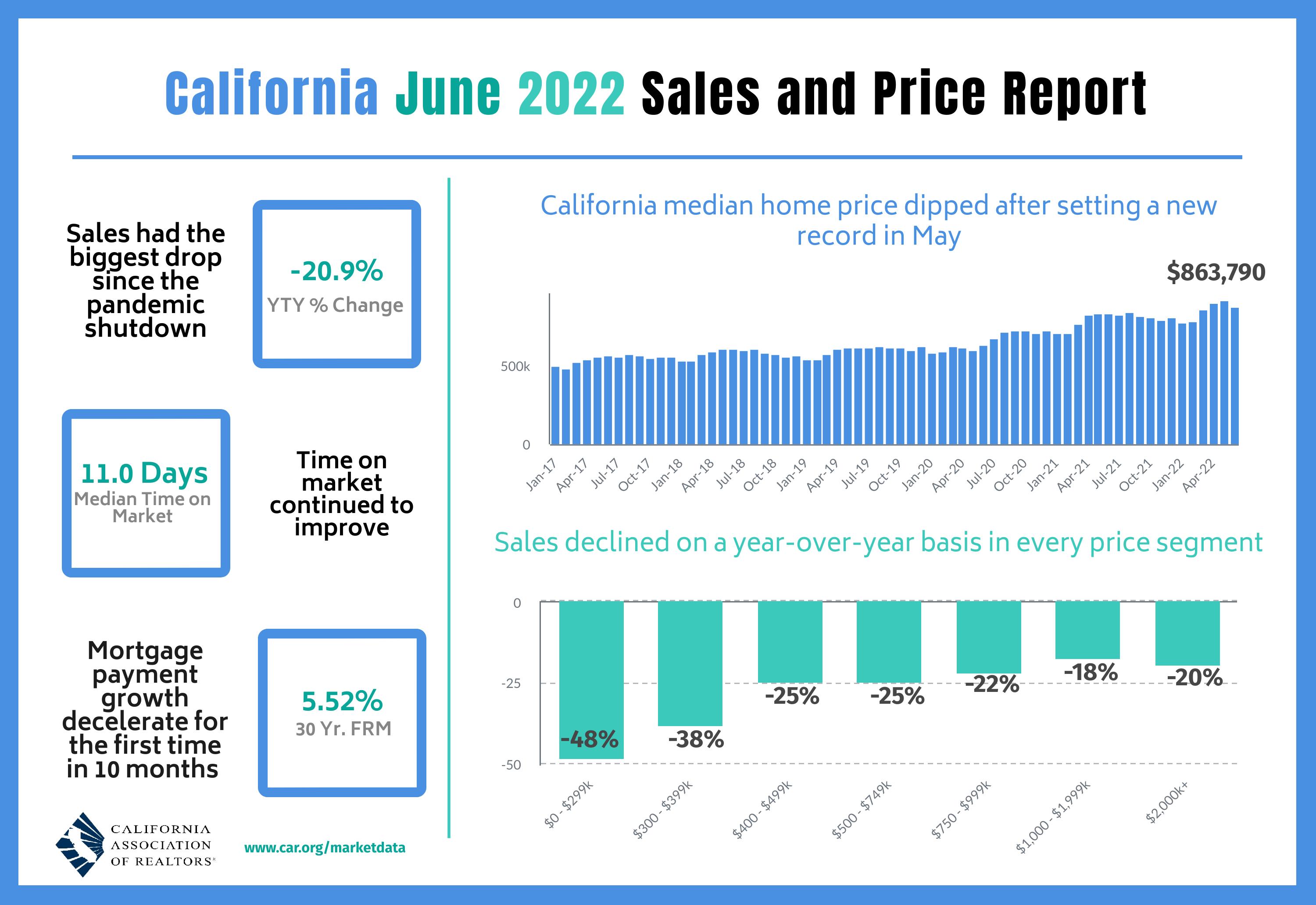
The fair is free and open to the public at the Hacienda Heights Community and Recreation Center, October 28. The Resource Fair is designed to connect homeowners with various topics including how to build Accessory Dwelling Units, or ADUs – the small granny flats you find behind homes – how to save on your taxes and what to do when a property owner dies, to name just a few of the topics that will be covered.
“Since this is only the second Assessor in-person Homeowners’ Resource Fair over the last couple years because of the pandemic coupled with the first being so well-received, we are anticipating a good-sized crowd,” Assessor Jeff Prang said. “You might want to register ahead of time. This is a great opportunity for the public to discover the services available throughout the County.”
The first in-person Homeowners’ Resource Fair was in Huntington Park back in May attracting hundreds of people from the local community and throughout the County along with dozens of elected officials. It was a resounding success, the organizers said.
This Resource Fair also will feature representatives from the Office of Los Angeles County Supervisor Hilda L. Solis of the First District, which covers a large portion of the San Gabriel Valley.

For more information or to register for the Homeowners’ Resource Fair go to: https://assessor.lacounty.gov/news-information/events
Local elected officials will attend along with Assessor Jeff Prang as well as representatives from various other departments ready to assist the public on myriad of issues. The event will broadcast live on the Assessor’s Facebook page.

LA COUNTY ASSESSOR HOSTS
IN - PERSON
~•~ October 28, 2022 9 am to 12 pm Hacienda Heights Community & Rec. Center 1234 Valencia Ave Hacienda Heights 91745 7

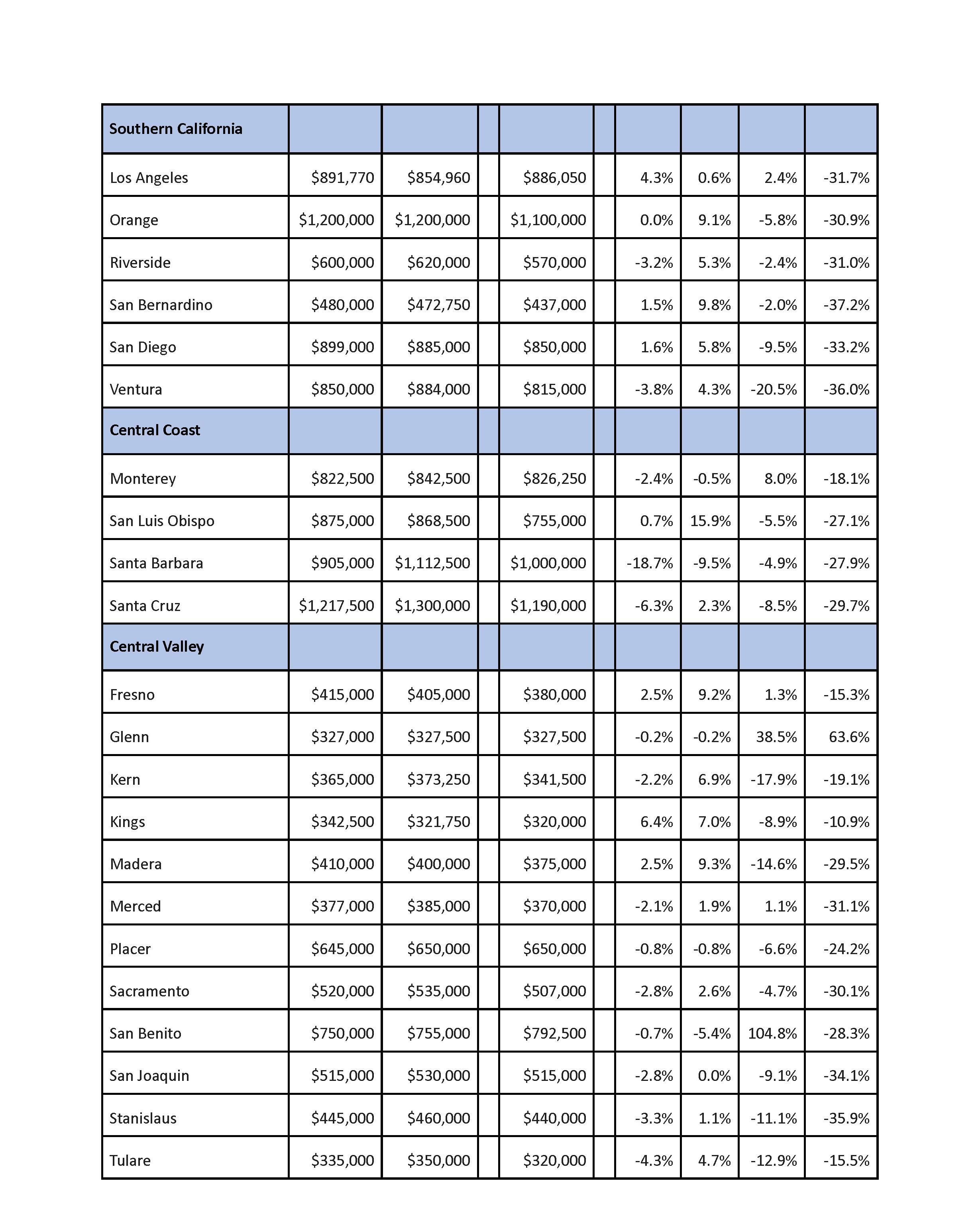
8 Cont’d from page 4 Cont’d on page 10



9

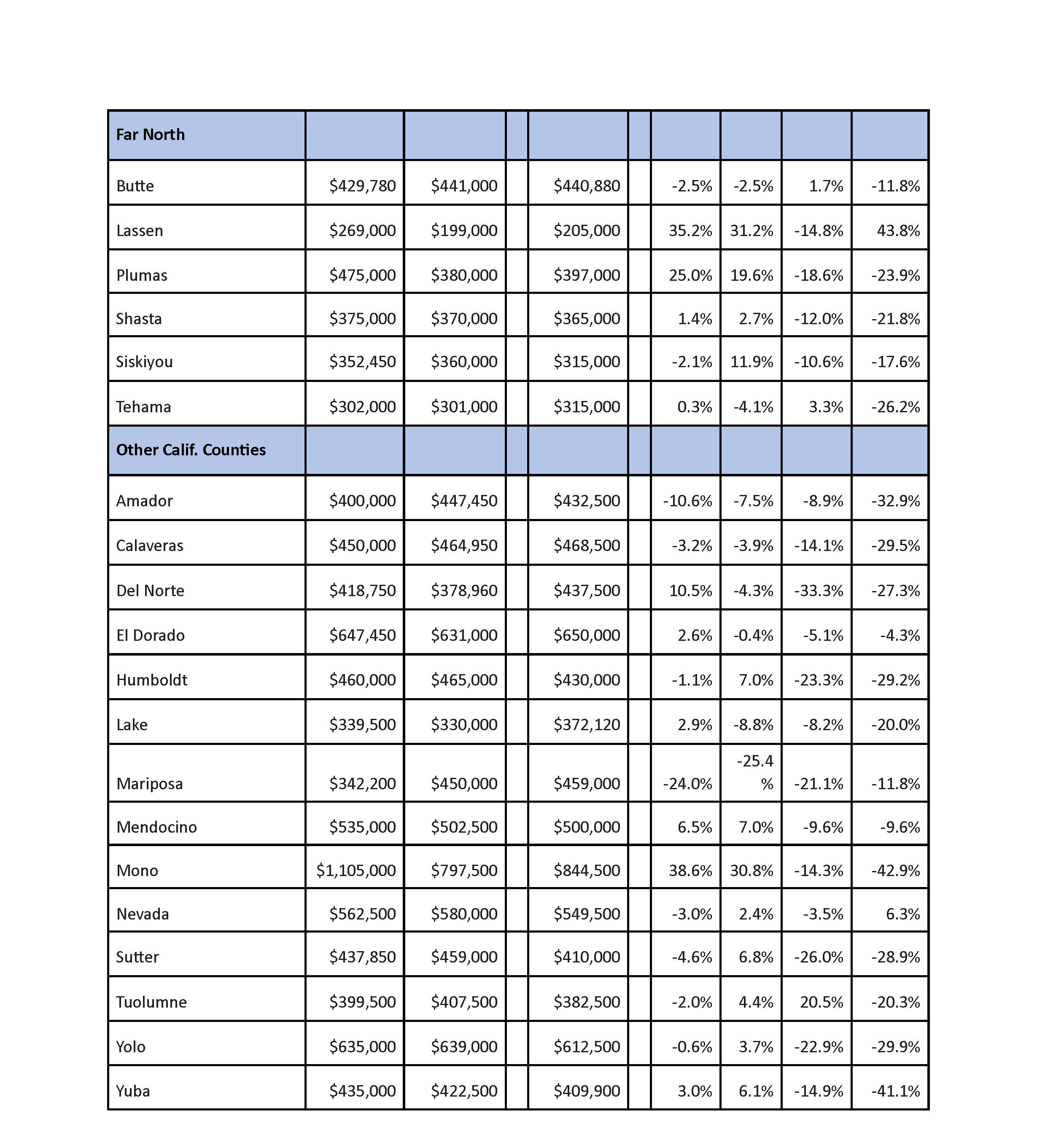
10 Cont’d on page 12 Cont’d from page 8



11

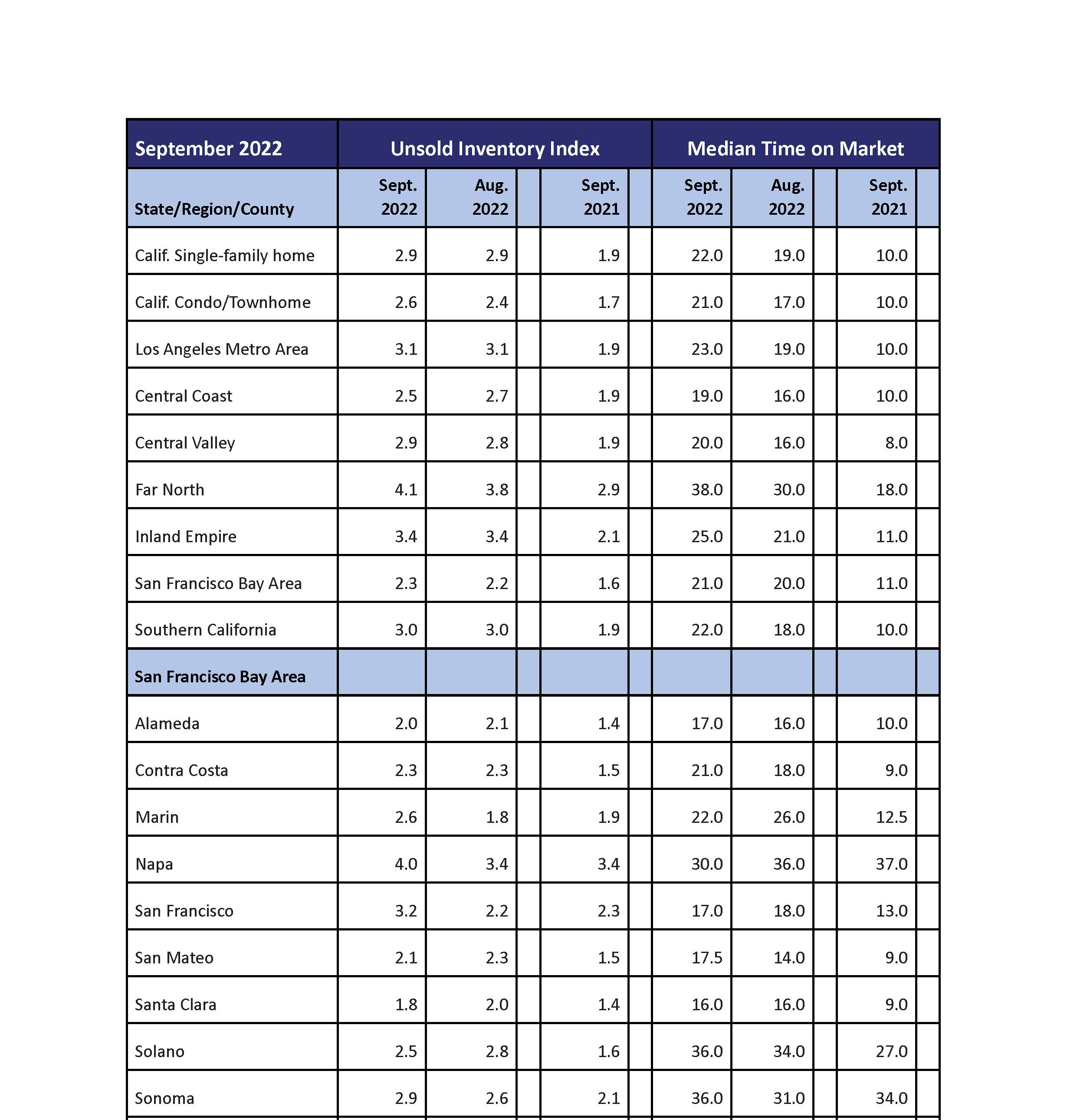
12 Cont’d on page 14 Cont’d from page 10 September 2022 County Unsold Inventory and Days on Market (Regional and condo sales data not seasonly adjusted)


Invites You To Our Installation Luncheon FRIDAY 11:00AM December 2nd 2022 Deadline to Purchase Tickets is Monday, November 21, 2022 Le Méridien Pasadena Arcadia 130 W. Huntington Drive, Arcadia, CA 91007 The Future Is NOW West San Gabriel Valley REALTORS® Honoring Our 2023 President Ling Chow & 2023 Board of Directors Members: $55.00 Non-Members: $75.00 Click HereTo Register •WS G VR• 13

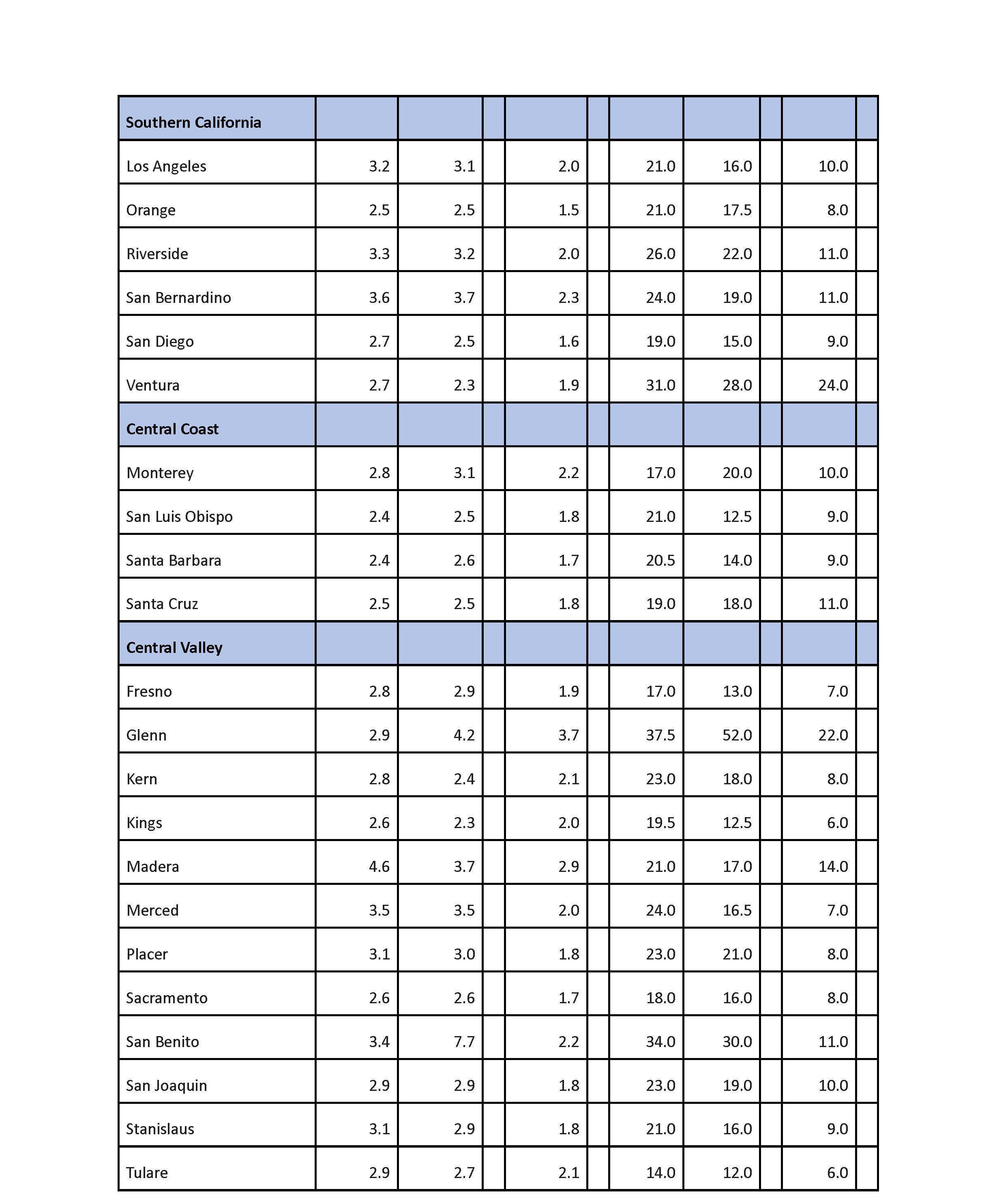
14 Cont’d on page 15 Cont’d from page 12

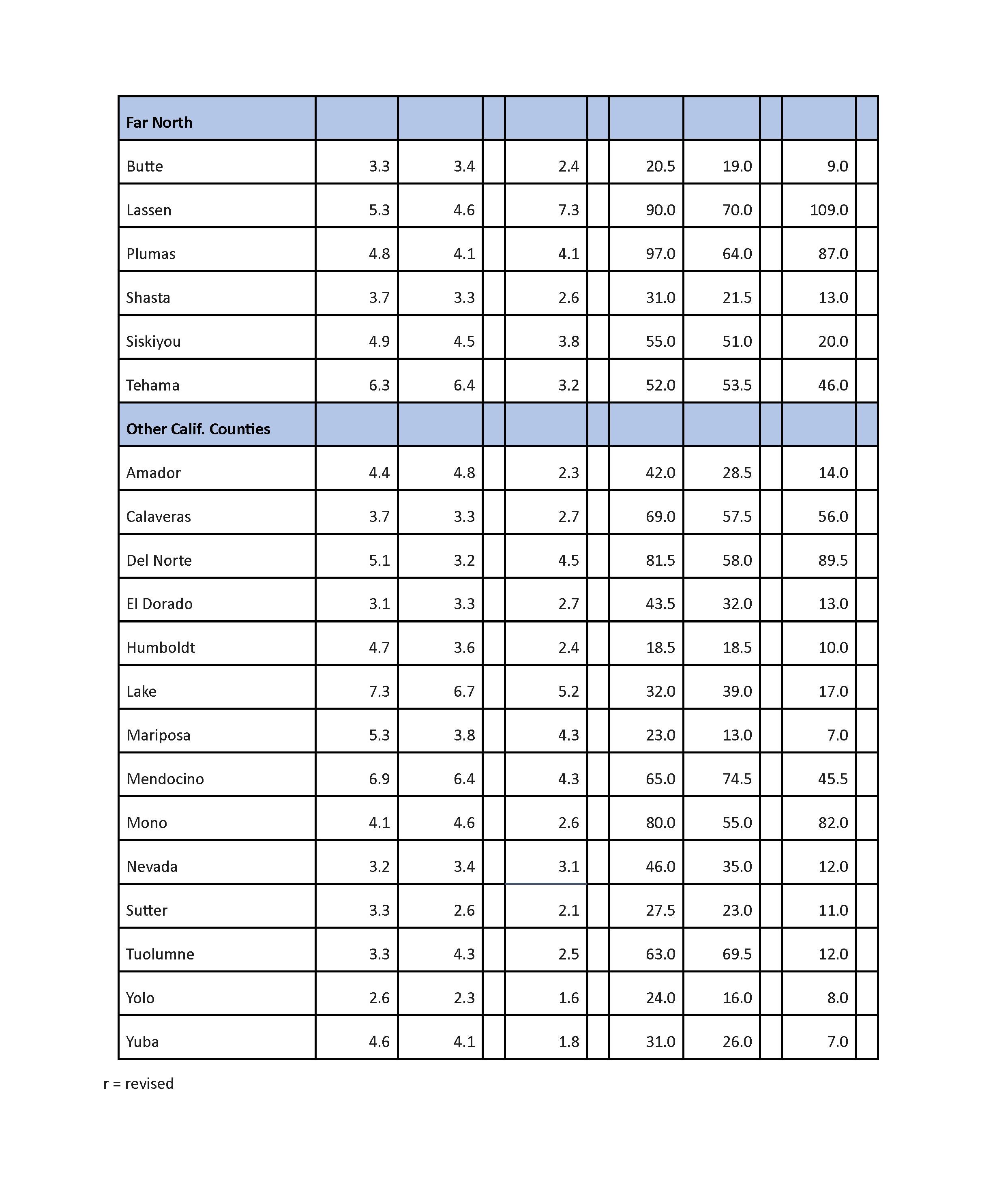
15 Cont’d from page 14 ~•~

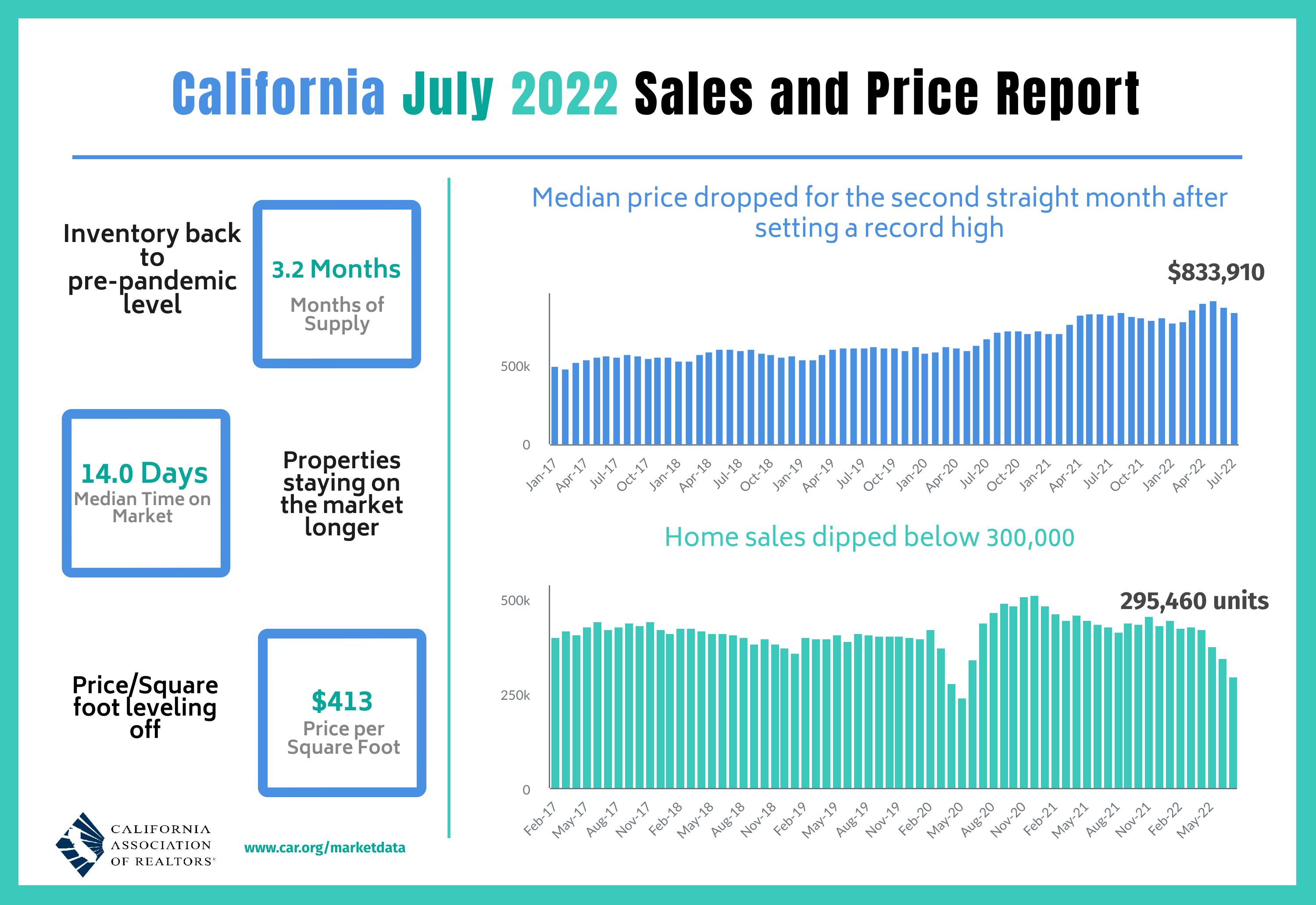
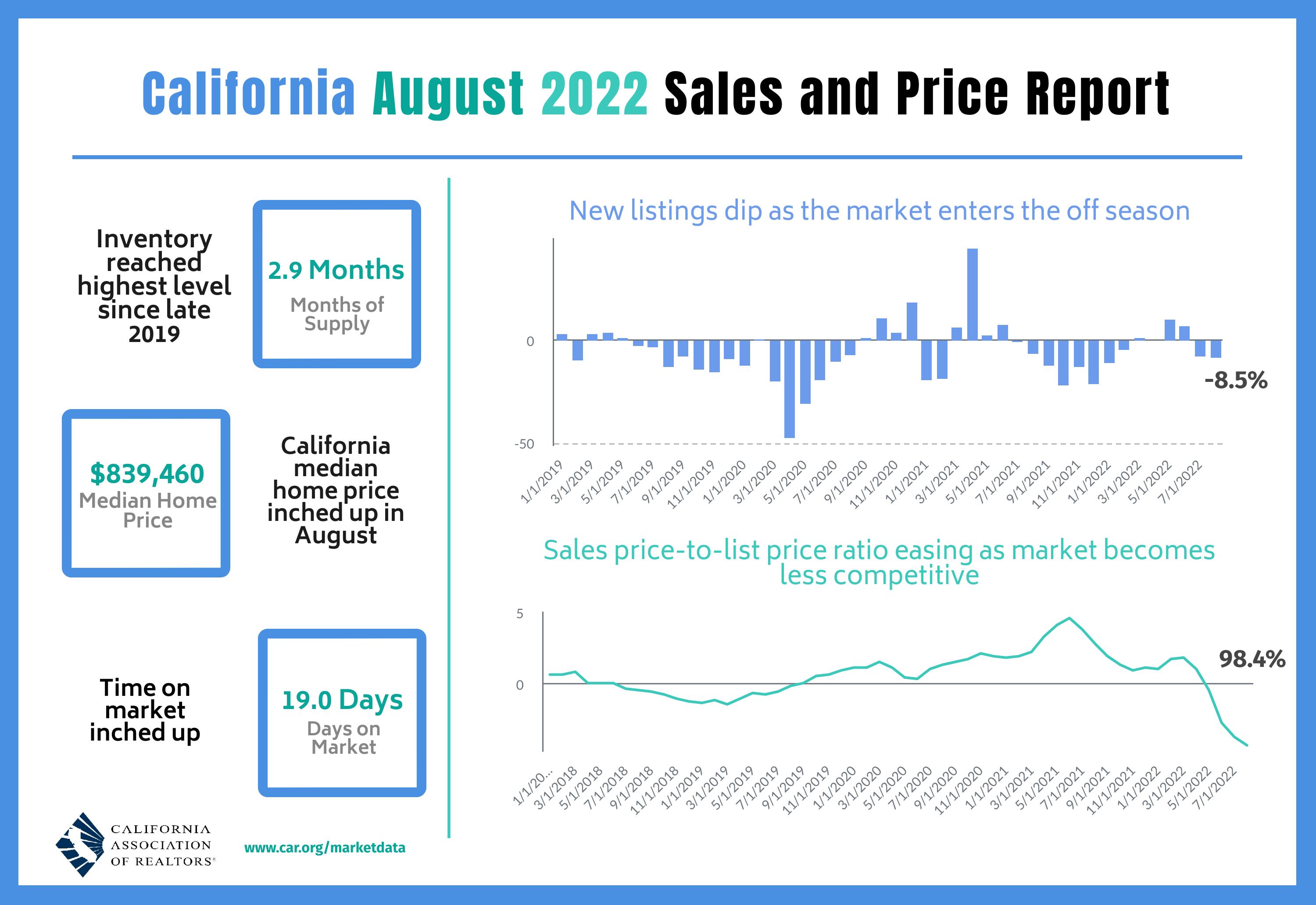
16
NAR
FOR NEW ACTION ON HOUSING AFFORDABILITY
WASHINGTON (July 27, 2022) –The Biden Administration on Wednesday announced new steps to tackle the housing supply crisis.
The plan by the U.S. Department of the Treasury allows the use of $350 billion in American Rescue Plan funds by state, local, and tribal governments toward the development, repair, and operation of affordable housing units.

The following is a statement from National Association of Realtors® President Leslie Rouda Smith:
“ The top issue around the country among our 1.5 million members is housing supply. NAR commends the White House for addressing this challenge head-on and working across agencies on a comprehensive plan to provide the necessary flexibility for state and local governments.
Any effor t to add supply will help alleviate a historic shortage in affordable housing. NAR commissioned a landmark research report last year showing a lack of 5.5 million homes in the U.S.—a gap so large it would take more than a decade to dig out of, even with accelerated new construction. It is nothing short of an affordability crisis hurting first-time, first-generation, and middle-income Americans the most.
N AR supports comprehensive action that includes investment in new construction, zoning reforms, expansion of financing, and tax incentives to spur investment in housing and convert unused commercial space to residential.
We look forward to a continued partnership with the Administration, Congress, and business and nonprofit groups on an all-of-the-above approach to this historic challenge.”
For more information on supply and affordability policy proposals supported by NAR: 2022 REALTOR® Legislative Priorities.

The National Association of Realtors® is America’s largest trade association, representing more than 1.5 million members involved in all aspects of the residential and commercial real estate industries. ~•~

17
COMMENDS TREASURY DEPARTMENT

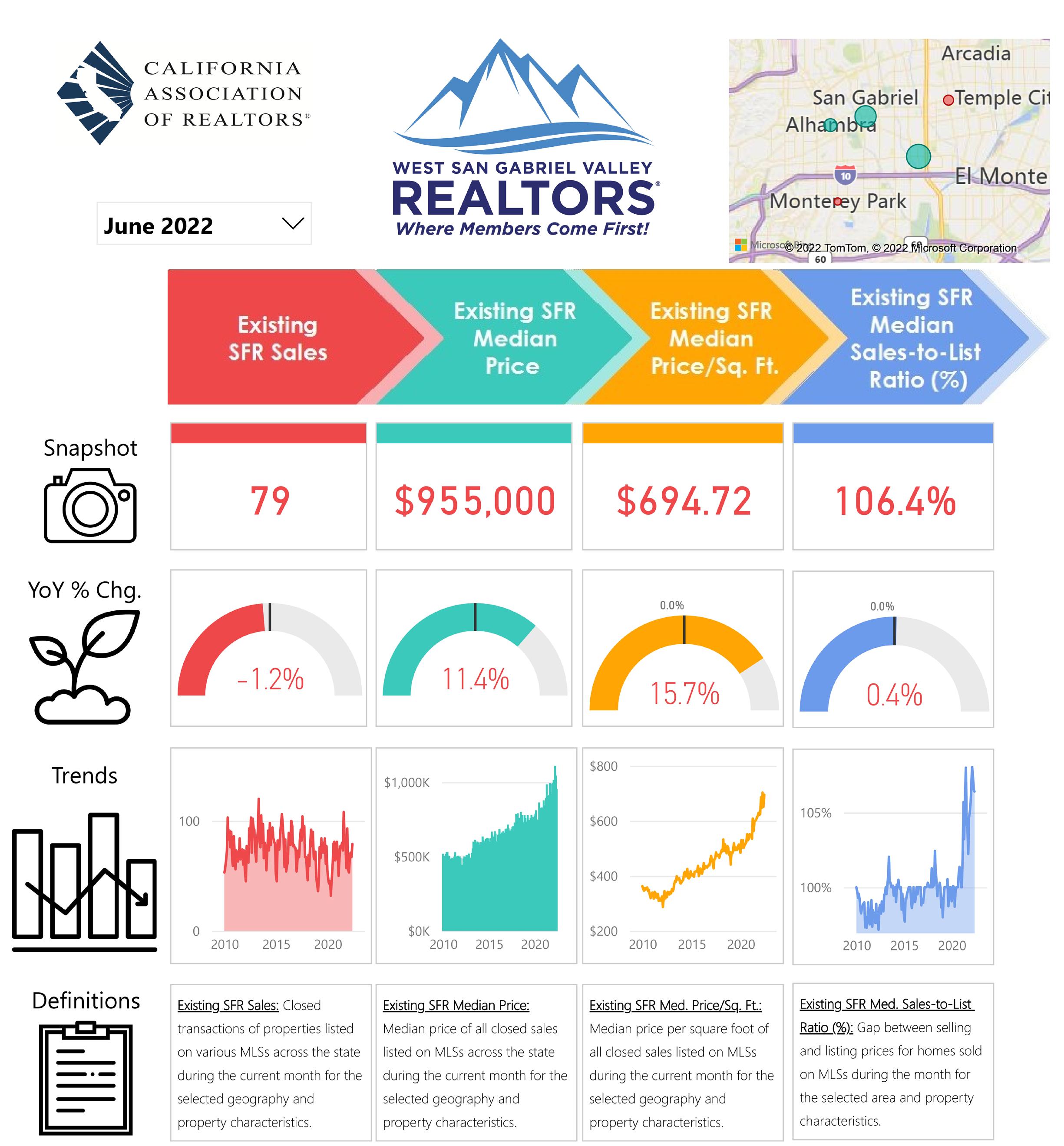
18


19
SMART HOME SECURITY GETS EVEN SMARTER - AND EASIER
By Leanne Potts Article From HouseLogic.com
Smart home security can give you a (virtual) lock on protecting your home and peace of mind.
Once upon a time, installing a smart home security system was complicated and expensive. To get one, you had to call a professional company. They’d send an installer out to drill holes in your walls and run wires throughout your home. You’d spend big bucks for the installation and a multiyear maintenance and monitoring contract.
But now, technology has changed that completely. You can DIY a smart home security system with moderately priced equipment. Your options include smart door locks, security cameras, video doorbells, and motion sensors you can install yourself. Smart home security systems run on Wi-Fi, Zigbee, or Bluetooth, with no wiring needed. And you can monitor these systems with an app on your phone.
Because of this simpler, more affordable technology, home security devices are more popular. Market researchers NPD Group report that half of U.S. consumers now own at least one smart home device, up from 35% in 2020. And smart security devices are one of the most popular smart home devices. They had higher sales gains, at 44%, than any other category in 2020, says NPD Group.
If you’re thinking of joining the fan club by adding smart home security to your house, here’s an overview of the most popular device categories.
Smart Door Lock
A smart door lock is a Wi-Fi- or Bluetooth-enabled device that lets you lock and unlock a door via an app on your phone. Smart locks work by opening and closing a deadbolt electronically. This form of keyless entry lets you open a door with an icon tap or a voice command. That way, you won’t be fumbling for keys while your arms are full of groceries.
Pros
• You have a lot of control over comings and goings at your house. You can see who opened the smart door lock and when, so you can check if your kids got home from school on time. You’ll know if the dog walker showed up at noon. And you can do it while sitting at your desk at the office. “I love knowing every time my door opens or closes,” says Christy Roth, a smart home tech expert in charge of Home & Distribution Software and Devices at Schneider Electric in Spring Hill, Tenn.
• You can give out virtual keys. These codes will let a guest or family member unlock the door with their phone. You can set the keys to expire or work only during specific times. You won’t have to leave a key under the doormat or give away house keys you won’t get back.
• Burglars can’t pick them. Smart locks don’t have a key slot, so they’ll foil analog burglars.
Cons
• If you lose power or your phone, you may not be able to get into your house. If you don’t have power you won’t have Wi-Fi. And that means you can’t open your smart lock. The same chain of events happens when you lose your phone. You need a backup plan, like being able to log into your smart lock from another device. It’s the digital equivalent of a spare key.
• They use batteries. If the batteries die, you won’t be able to unlock the door. You must change the batteries periodically.
• Digital thieves can hack them. They can try to override your entry code and unlock your door. The good news: Your lock will alert you that there’s been an unauthorized entry.
• They’re more expensive. Smart locks cost $150 to $300, significantly more than a dumb lock.
Video doorbell
A video doorbell lets you see who’s at your door when you’re not home. The device, also called a doorbell camera, uses Wi-Fi to stream live video to your phone. Here’s how it works: When someone rings the doorbell or when the camera detects motion, an app will notify you. The video doorbell will then livestream video to your phone so you can speak to the person at the door. You can record the video and save it to your phone or the cloud, which comes in
handy if you want a record of who did what on your porch. “A video doorbell is a must-have in my book,” Roth says. A lot of people agree. As of 2020, about 20 million U.S. homes,16%, had video doorbells. Industry analysts predict that number will grow significantly as more people adopt smart home technology.
Pros
• You can answer the door wherever you are. Whether you’re on the other side of the door or the other side of the world, you can see who is at your door and ask them what they want.
• They help stop porch pirates. Roughly 36 million Americans say they’ve had packages stolen from their porch in the last year. When a delivery person leaves a package, a video doorbell will alert you so you can bring it inside or tell the person where to stash it. If porch pirates beat you to your package, a video doorbell can help police catch the thieves because you’ll have them on camera stealing your Amazon Prime delivery. “If someone knows you’ve got a video doorbell, they’ll probably think twice about stealing your package,” says Steven Hummel, manager of the Consumer Technology Association’s market research team. “They add a lot of security to your home for not a lot of money.”
• You don’t have to rush to the door every time the bell rings. Instead, check the app on your phone. If it’s a friend, get off the sofa and let them in. If it’s a stranger, you don’t have to interrupt your “Ted Lasso” binge.
Cons
• Some video doorbells need to be hardwired to your existing doorbell wiring. That may not be a DIY job, since you’d have to handle electrical wires.
• Some run only on batteries. They’re easier to install, but you’ll need to replace the batteries every few weeks.
• They’re more expensive than a dumb doorbell. Video doorbells cost $100 to $350, depending on the features. That’s as much as eight times the cost of an analog doorbell.
• Some companies tr y to upsell you on a confusing array of services and features. You can hook your device up to a 24/7 monitoring center or get more storage space in the cloud by paying extra fees. “I can’t tell you how many $1.99 and $4.99 services many of these devices come with,” Roth says. “ It can get overwhelming managing and understanding the services you need versus the ones you don’t.” If you know your needs, that will help you sort through which, if any, additional services to get, Roth adds. If you’re a regular online shopper, consider a package detection upgrade that some video doorbells offer. It will alert you when a delivery person picks up or drops off a package. Or you can opt for a basic paid subscription that lets you store, download, or share video for up to 60 days.
Motion Sensor
A smart motion sensor is a battery-powered device that detects when anything or anyone crosses its path and triggers an action. It communicates over Z-Wave, Zigbee, Wi-Fi, or Bluetooth. A motion sensor can do everything from turning on lights when you enter a room to telling you when your toddler is climbing out of her crib. A lack of motion can also trigger motion sensors, so lights will turn off when no one is in a room. You can run motion sensors through an app on your phone to control devices including smart lights and speakers just by tapping an icon.
Pros
• You can install motion sensors easily and almost anywhere. You can mount them on the wall or set them on a flat surface in minutes.
• Motion sensors can lower your energy bills. A motion sensor can tell smar t bulbs, smart speakers, and TV sets to turn off when a room has been empty too long or at a set hour each night.
• You can use them to turn a houseful of smart home gadgets into a smart home. Place motion sensors around your home, link them to your smart devices via your smart speaker, and the sensors can help everything work together.
• They’re super affordable. You can get a motion sensor for as little as $20.
Cons
• Motion sensors use batteries. You’ll need to check and change them regularly to keep them working. Most will let you know when the batteries are ge tting weak.
20
Cont’d on page 21
• If they run on Wi-Fi, they may hit dead zones in your home and stop working. You’ll need to boost their range with a mesh router – also called a mesh network – that pairs two or more routers together to deliver a seamless Wi-Fi network. If your home is larger than 3,000 square feet or multistory, a mesh router is a good idea. A bridge – a device that joins two or more Wi-Fi networks so they can work as a single network – will also boost your home’s Wi-Fi coverage.
Security Kit or Home Monitoring System
If you want your DIY smart home security to go bigger than one or two devices, get a security kit. Also known as a home monitoring system, these kits replace the home alarm systems you used to have a pro install. They generally come with contact and motion sensors, a base station that’s the wireless brain of the system, and touch-screen control panels.
Pros
• You can customize the system. Adding security cameras, glass break sensors, panic buttons, and environmental sensors will alert you to gas leaks, water leaks, or fire.
• You can integrate your other smart tech devices. Many home security systems double as smart home hubs so you connect and automate your other smart devices into a single network. You can connect your alarm, your smart locks, your smart thermostat, and your video doorbell and run them all with an app on your phone.
• You can save money on homeowners insurance. Some insurance companies give policy discounts for homes with security systems that


include window and door sensors, smart locks, or video doorbells. They don’t give discounts for individual devices like video doorbells.
• The kits are more affordable than professionally installed alarm systems. Home monitoring systems start at $200 to $400 for a basic setup.
Cons
• You will have to pay extra for professional monitoring. Unlike professionally installed alarm systems, you don’t get a team of trained dispatchers who will monitor your alarm 24/7. That’s part of the reason DIY systems are so much more affordable. Many home monitoring systems offer professional monitoring for an extra monthly fee that ranges from $10 to $40.
• You’re the tech support. Unlike professionally installed systems, there’s not a tech on call to fix glitches. It’s just you and You Tube tutorials.
Smart tech security devices make it easy and affordable to protect your home. You can install many of these devices yourself and only pay for a monitoring plan when you want it. You can keep an eye on your family and your home from any location via sensors and cameras directly from your phone. Video doorbells, smart door locks, motion sensors, and home monitoring systems put high tech security at your fingertips. ~•~
Leanne Potts is an Atlanta-based journalist and serial home remodeler. She’s tackled five fixer-uppers and is working on a sixth. She’s written about everything from forest fires to dog-friendly decor and spent a decade leading the digital staff of HGTV. Visit HouseLogic.com for more articles like this. Reprinted from HouseLogic. com with permission of the NATIONAL ASSOCIATION OF REALTORS®.
CALIFORNIA DREAM FOR ALL PROGRAM UPDATE
By California Association of REALTORS®
C.A.R. worked in a coalition with Habitat for Humanity California, The Two Hundred, San Francisco Bay Area Planning and Research Association (SPUR), LISC San Diego, Housing Action Coalition, National Association of Hispanic Real Estate Professionals (NAHREP), the California Building Industry Association (CBIA ), and the Black Leadership Council (BLC), among others, requesting that the state allocate more in the budget to facilitate homeownership opportunities for California’s working families. Specifically, the coalition requested that the state dedicate $400 million to affordable owner-occupied workforce housing development and $200 million for down payment assistance programs. In addition to this effort, C.A.R. has also consistently requested funds to assist homeowners with low-cost ADU construction loans since 2018.
C.A.R. made this budget request a Legislative Day priority and was a focus of our advocacy efforts. We are happy to report that we have far exceeded our goal. The budget and accompanying legislation were approved by the Legislature and signed into law by the Governor and includes: an allocation of $500 million to CalFH A to fund Senate Pro Tempore Atkins’ proposed new equity sharing downpayment assistance program entitled the California Dream for All Program ($500 million) along with another $50 million to fund low-cost loans to homeowners seeking to construct ADUs. Additionally, the budget allocated $350 million over two years ($250 million in 2022-23 and $100 million in 2023-24) to CalHOME to facilitate the construction of new homes for low-income families.
The money allocated to the California Dream for All Program will provide down payment assistance with an equity share component for first time homebuyers making no more than 150% of the area median income. Details are still forthcoming but effectively it will provide homebuyers with up to a 20% down payment, with a small percentage coming from the homeowner. The plan envisions that homeowners will refinance out of that state lien and once the state investment is paid back those funds could be used for other potential homeowners. C.A.R. will provide more
information on this program as details are finalized. You can view a webinar on the California Dream for All program here
C.A.R. has not historically participated in the budget process in this manner and the success of this effort bodes well for potential future efforts in this arena. We are proud of the work put toward this effort and applaud the passage of this state budget prioritizing homeownership, for our release go here.
Cont’d from page 20
21
~•~
“We are happy to report that we have far exceeded our goal. The budget and accompanying legislation were approved by the Legislature and signed into law by the Governor... ”


22


23
HOW TO MOVE PAST STUDENT DEBT AND INTO A HOME
By Leanne Potts Article From HouseLogic.com (August 25, 2022)
You’ve got options, like repayment help from your employer and coaching from a mortgage broker.
You want to buy a house. But you’re worried you won’t qualify for a mortgage because of your student loan debt. You’re not alone. Half of non-homeowners (51%) say student loan debt is delaying them from buying a home, according to a survey from the National Association of REALTORS?. That number jumps to 60% for millennials.
The numbers tell an ugly story of a generation paying for its education long after graduation. As a result, they’re having to make hard life choices for decades. The average public university student borrows $30,000 in student loans to get a bachelor’s degree, according to the Education Data Initiative. The average student loan payment is $460 a month. And nearly 48 million people have student loans.
Student debt is no longer just a first-time home buyer problem, says Cale Iorg, a loan officer at Supreme Lending in Alpharetta, Ga. “We get people in their 40s and 50s who are still paying off student loans. They went back for a master’s degree, or they are parents who cosigned their children’s student loans.”
President Biden provided some relief (not reflected in the previous numbers) when he announced in late August 2022 that he would cancel $10,000 in student loan debt for those earning less than $125,000 per year. The relief includes an additional $10,000 for those who received Pell grants for low-income students.
Before the pandemic, more than 8 million people -- one in five borrowers with a payment due -- had defaulted on their loans, the “New York Times” reported. But because many of them carried relatively small balances, they’ll now be eligible for loan cancellation.
Student loan payments have been paused since March 2020, but are scheduled to resume in January 2023.
Despite uncertainty about debt cancellation timing and impact, you can get a mortgage while you have student debt. Here are eight tips for making it happen.
And pay down those student loans.
#2 Increase Your Credit Score
Your credit score is the other number that profoundly affects your financial fortune. It’s basically a grade for what kind of a job you do paying your bills. The simplest ways to boost your credit score include paying your bills on time, using less than 30% of the credit limit on your credit cards, and paying off debts. There’s a lot of help out there, including free webinars, to guide you on improving your score. Generally, these tips involve paying off bills and spending less money. Yes, frugality.
#3 Look for Down Payment Assistance
When you’re paying off student loans, saving for a down payment can be tough. The down payment can range from 3.5% to 20% of the home purchase price. If you don’t have a relative who can dump a chunk of cash on youknown in the mortgage biz as gift money - there’s other help. Down payment assistance programs offer loans or grants that pay the down payment on a house. Some DPA funds can be used toward closing costs, too.
#1 Lower Your Debt-to-Income Ratio
Your debt-to-income ratio, or score, is one of the most impactful numbers on your life since your ACT score. It measures the percentage of your monthly income that goes to pay your debts. You calculate it by adding all your monthly debts - credit card minimums, rent or mortgage, car payments, and, yes, student loan payments. Then, you divide the total by your monthly gross income (take-home pay before taxes and other monthly deductions).
Your debt-to-income ratio should be no more than 45% of your gross monthly income, Iorg says. Many lenders consider the ideal debt-to-income ratio, including a mortgage payment, to be 36% or less. Depending on your credit score, savings, assets, and down payment, lenders may accept higher ratios, according to Bankrate. It depends on the type of loan you’re applying for.
You can improve your debt-to-income ratio three ways: Make more money, spend less money, and pay down your debt, Iorg says. “Not everybody can wake up tomorrow and say, ?Oh, well, I’m going to get a job that pays $4,000 more a month,’” he adds. Sure, there are always side hustles to bring in extra bucks to help you pay down bills. “But the surest way to improve your debtto-income ratio is to live within your means.”
Most DPAs require you to be a first-time home buyer with a credit score of 640 or higher and a moderate source of income. DPAs are usually offered at the local level, and their eligibility rules vary by state, city, or even ZIP code. In Seattle, for instance, you can get up to $55,000 in down payment assistance in the form of a low interest loan, depending on your household size and income. The buyer must pay just 1% down out of pocket, and the DPA pays the rest. In Georgia, a DPA offers loans of $7,500 for most buyers. Teachers, health care providers, active duty service members, and public employees are eligible for $10,000.
#4 Get a Co-Borrower
Want to instantly improve your chances of getting a mortgage? Put a coborrower on your mortgage. Their income counts toward the debt-to-income ratio, and their credit history bolsters yours. You’re combining forces to strengthen your financial qualifications, and that can offset the dead weight of your student loan debt.
“Co-borrowers are not uncommon,” Iorg says. “It’s a good way to go for a buyer who just doesn’t have enough money from their monthly income to qualify for a mortgage.” Iorg says the co-borrowers he sees are usually parents, siblings, or grandparents. Most co-borrowers are family members or someone with whom the homeowner has a personal relationship. But lenders don’t require a co-borrower to produce proof they know you or are related to you. They just want proof the co-borrower can pay your mortgage if you don’t.
Remember, a co-borrower will share title on the home. If that’s not your cup of joint ownership, consider a co-signer. Their income will boost your financial profile, but they won’t be a co-owner of the house.#4 Get a Co-Borrower Want to instantly improve
chances of getting a mortgage?
24
your
Put a coLower Your Debt-to-Income Ratio “We get people in their 40s and 50s who are still paying off student loans. They went back for a master’s degree, or they are parents who cosigned their children’s student loans.” Here are Eight Tips 1 2 3 4 5 6 7 8 Lower Your Debt-to-Income Ratio Increase Your Credit Score Look for Down Payment Assistance Get a Co-Borrower Look into Student Loan Protection Programs Get Help from Your Employer Lower Your Student Loan Payments Get a Mortgage Broker Who Will Coach You
#5 Look into Student Loan Protection Programs.
You could be eligible for loan forgiveness if you’re a teacher, attended a for-profit school that went out of business, or have a total and permanent disability. Here are the programs erasing student debt:
• Public Service Loan Forgiveness: This program has been around since 2007 to grant debt relief to teachers, social workers, firefighters, employees of nonprofits, and other public servants. But the Biden administration loosened the rules to make more people eligible. According to the U.S. Department of Education, the PSLF has forgiven $2 billion in student loans and is still going.
• Borrower Defense and Closed School Discharge: You may also be eligible for debt relief if you attended a school that turned out to be scamming you. Hello, ITT Tech, DeVry University, and Corinthian Colleges. Thanks to rules under the Biden administration, defrauded students who got only partial debt relief under the Trump administration can now get the rest of their student loans wiped out.
• Total and Permanent Disability Discharge: Borrowers with permanent disabilities that prevent them from working can shed their student debts, thanks to changes to an existing program that the Education Department says will help at least 370,000 borrowers drop more than $6.5 billion in student debt.
#6 Get Help from Your Employer to Repay Student Debt.
Some companies are offering student loan repayment assistance as a benefit. Google matches employee payments up to $2,500 a year; Aetna matches up to $2,000 a year with a lifetime cap of $10,000; and Fidelity Investments pays up to $10,000 of an employee’s student loans. Other companies that offer payment assistance include Carvana, Chegg, Hulu, Lockheed Martin, New York Life, and PwC (PricewaterhouseCoopers).



Employer-sponsored student loan repayment may become more common. The Coronavirus Aid, Relief and Economic Security (CARES) Act of 2021 gives a tax break to companies that offer student loan repayment assistance. From now till Dec. 31, 2025, employers can contribute up to $5,250 a year tax-free to an employee for repayment of student loans. So, if your boss gets on board this year, you could get as much as $15,000 of your loans paid off before the program ends.
#7 Lower Your Student Loan Payments.
You can do this in one of two ways:
• Opt for an income-based repayment plan for federal student loans. You can apply for loan repayment plans that will lower your monthly payment
on a federal student loan based on your income and family size. The basic income-based repayment plan caps your payments at 10% of your discretionary income. It also forgives your remaining loan balance after 20 years of payments. That can go a long way toward lowering monthly debt payments and your debt-to-income ratio.
• Refinance your private student loans. This is a good idea if you have private student loans that aren’t eligible for federal loan forgiveness or have variable rates. If you can get a lower interest rate, you can change your life. For example, if you have $30,000 in private student loans with an 8% interest rate, you’ll pay $364 for 10 years. Refinance that to a 15-year loan at 4% interest, and your payment drops by $142 a month. You’ll also save around $3,735 in interest over the life of the loan.
#8 Get a Mortgage Broker Who Will Coach You.
Look for someone who is experienced at working with borrowers who have more student debt than they’d like. Get a broker who will work with you to find DPA programs; steer you through the ins and outs of FHA, conventional, and VA loans; and help you get your finances in order so you become a better mortgage candidate. Iorg says his office has a credit analyst whose job is to help clients improve their credit scores and debt-to-income ratios.
The Bottom Line
There’s no quick fix to buying a house when you have student loans.
The good news is there’s more public support for student debt forgiveness. Many economists say forgiving student loans, such as the Biden plan for debt cancellation, would put money back into Americans’ pockets. That would boost the economy and encourage the formation of more businesses and households. More businesses means more jobs, and more households means more spending. And spending fuels the U.S. economy.
Recent events have reinforced that changes are the norm for student loan debt and relief. Changes to the PSLF program have made more people and more types of federal loans eligible for forgiveness. Add to that the raft of assistance programs that help renters become first-time home buyers, and you may be able to afford it all: a college education, a mortgage, and a 401(k) contribution. You just may not be able to do it all at once. It will take planning and time.
25
~•~


26


27

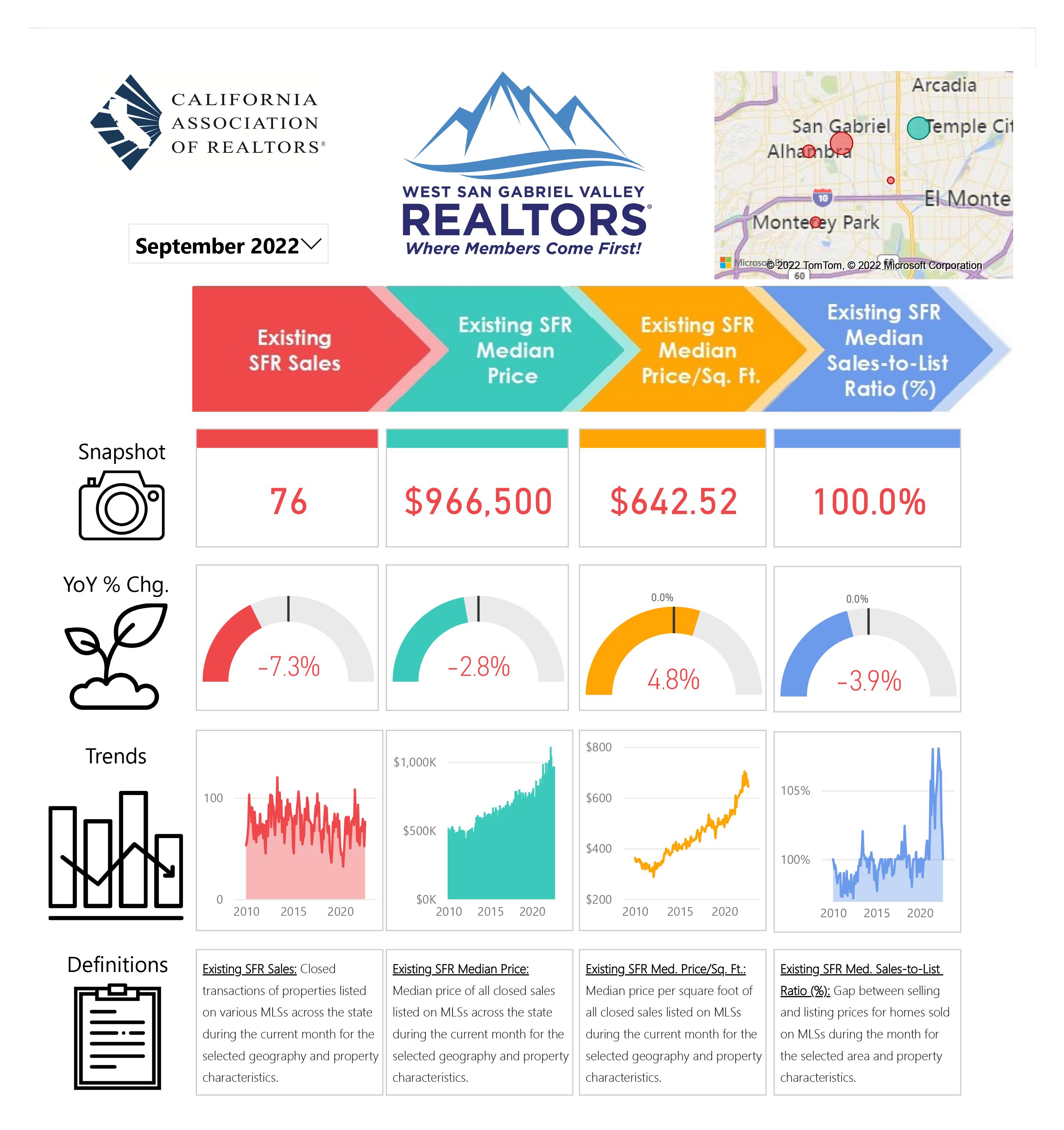
28


29
BOARD OF DIRECTORS ANNOUNCEMENT

30 Ling Chow President 2023
The West San Gabriel Valley REALTORS® (WSGVR) is pleased to announce the election results of the 2023 Board of Directors. The 2023 Board of Directors will be installed on Friday, December 2, 2022 at Le Méridien Pasadena Arcadia and will assume their board duty on Sunday, January 1, 2023. Congratulations to all newly elected and returning board members. Thank you for your service to WSGVR












 Cecelia Rudar President-Elect
Brian Chen Immediate Past President
Earl Knudson Director
Shun Zhang Vice President Yin Bihr Director Pauline Lam Director
Nanette Ong Treasurer Marian Cavataio Director Tom Tseng Director
Jeff Huang Secretary Lorraine Clark Director William Wei Director
Cecelia Rudar President-Elect
Brian Chen Immediate Past President
Earl Knudson Director
Shun Zhang Vice President Yin Bihr Director Pauline Lam Director
Nanette Ong Treasurer Marian Cavataio Director Tom Tseng Director
Jeff Huang Secretary Lorraine Clark Director William Wei Director
31
06/06/22 Planning Commission Meeting
ITEM 1: Extension for Planned Development Permit
The Planning Commission has approved a one-year time extension to construct an 18-unit residential condominium complex on a site of approximately 27,020 square feet located at 749-801 South Sierra Vista Avenue, Alhambra, CA.
ITEM 2: A Public Hearings and Planned Development Permits and Variances
A Planned Development Permit has been approved for 230-234 West Main Street and 236 West Main Street, Alhambra, CA
06/20/22 Planning Commission Meeting
ITEM 1: A Planned Development Permit, Conditional Use Permit and Variance
The Planning Commission has approved a one-year time extension to construct an 18-unit residential condominium complex on a site of approximately 27,020 square feet located at 749-801 South Sierra Vista Avenue, Alhambra, CA.
ITEM 2: A Public Hearings and Planned Development Permits and Variances
The application for a Planned Development Permit will be reviewed again in the July 18, 2022, meeting:
2 142 South Fremont Avenue, Alhambra, CA
It is to establish a martial arts studio in a lease space previously used as a medical office on an approximate land area of 36,643 square feet located in the CPD (Commercial Planned Development) zone.
06/27/22 City Council Meeting
ITEM 1: A Presentation of the Update of the 710 North Terminus Project and Related Mobility Improvements
Based on traffic studies and the 2040 SCAG/Metro Model, the alternatives presented to the City Council included the possible conversion of the 710 North Stub to a four-lane arterial and interchange upgrade at Fremont Avenue, Atlantic Boulevard, and Garfield Avenue.
The City Council received and filed the update (presentation by Kimley Horn). This project intends to relieve the congestion of Fwy 710 North with Fwy 10 West and East bound and move traffic faster, but the air quality, noise, and pedestrian’s safety nearby the Fremont school are to be considered. The presenter needs more input from the Fremont school and from the public. A further study and presentation will be made again in the near future. For detailed information, please refer to the following: https://www. cityofalhambra.org/AgendaCenter/ViewFile/Agenda/_06272022-852
ITEM 2: Development of a Bicycle and Pedestrian Transportation Improvement Plan
The City received a total of six proposals. On May 18, 2022, a panel interviewed and rated the six firms and selected the four firms that received the highest ratings: KTUA; Alta Planning and Design, Inc.; KOA Corporation; and Toole Design Group. The Improvement Plan is expected to require approximately 12-18 months to complete.
After discussion, the City Council has adopted the Alta Planning and Design, Inc., to move forward with the Bicycle and Pedestrian Transportation Improvement Plan.
ITEM 3: 2021-2022 Strategic Plan Update
A rental housing inspection program to inspect buildings with two or more units every other year started on May 31, 2022. Please refer to the following: https://www.cityofalhambra.org/611/Rental-Housing-Inspection-Program
7/18/22 Planning Commission Meeting
ITEM 1: Public Hearing
Address: 234 South Curtis Avenue, Alhambra, CA
An application for a Planned Development Permit has been approved to construct a four-unit apartment complex on an approximate land area of 7,500 square feet located in the R-3 Zone.
07/25/22 City Council Meeting
ITEM 1: Dog Parks Proposed
A First Dog Park in the City of Alhambra Has Been Proposed for Four Locations by the Recreation Commission and It Is Recommended to Consider the Location on the Corner of Almansor St. and Corto St. next to the YMCA
The City Council moved the direction to the proposed site of Almansor St/ Corto St for the dog park.
ITEM 2: Timed No-Parking Zone Resolution Adopted
Adopted a Resolution Establishing a Timed No-Parking Zone on the South Side of Main Street between Garfield Ave and 1Sst Street, Alhambra, CA
8/1/22 Planning Commission Meeting
ITEM 1: 205-207 South Marguerita Avenue, Alhambra, CA
A Planned Development Permit has been approved to develop a new sevenunit condominium development on a site of approximately 13,197 square feet located in the R-3 (Multiple Family Residential) zone. This application is exempt from the California Environmental Quality Act.
ITEM 2: Presentation Series on the Comprehensive Zoning Code Update
This is the first presentation in a series of presentations on the Comprehensive Zoning Code Update project presented by the Planning Division staff.
Presentation series on the Comprehensive Zoning Code Update:
• 8 /1/22 Introduction and Administration
8 /15/22 Zoning Districts, Permitted Uses, Nonconforming Uses
9 /6/22 Property Development Standards (i.e. density, setbacks, floor area ratio, heights, etc.)
• 9 /19/22 Parking Standards
• 1 0/3/22 Design Standards, Sign Standards
• 1 0/17/22 Project Re-cap
Highlights of proposed Zoning Code Update:
Modernize permitted and conditionally permitted land uses

Eliminate requirements for buildings vacant more than six months

• Streamlining land use entitlements and permits
• Eliminate occupancy permit
• Modernize development standards
• Increasing residential densities
• Incorporate more flexible parking standards city-side
• Reducing or eliminating parking requirements in the Downtown area
• Introducing objective design standards
On Valley Blvd., encourage development by expanding the number of properties to allow for residential/mixed use developments
08/15/22 Planning Commission Meeting
ITEM 1: Presentation Serieson the Comprehensive Zoning Code Update
This is the second presentation in a series of presentations on the Comprehensive Zoning Code Update project presented by the Planning Division staff.
ITEM 2: 727 South Sierra Vista Avenue, Alhambra, CA
A Tentative Tract Map TTM-22-02 has been approved with the conditions of approval (affordable housing & prevailing use). That will facilitate the conversion
32 CITY & COUNTY UPDATE - FALL 2022
ALHAMBRA
Cont’d on page 33
of an approved, but not yet built, 6,636 square foot, six-unit residential apartment complex into condominium units on a site of approximately 10,000 square feet located in the R-3 (Multiple Family Residential) zone. This application is exempt from the California Environmental Quality Act.
8/22/2022 City Council Meeting
ITEM 1: Check Presentation: Funding for a Comprehensive Sustainability Plan – F2M22-3
Congresswoman Judy Chu visited and presented to the Alhambra City Council a check in the amount of $680,000, which she was able to secure for the City of Alhambra through Community Project Funding in FY 2022-23 under the Department of Housing and Urban Development for the development of Alhambra’s Comprehensive Sustainability Plan.
MONTEREY PARK
June 2022
ITEM 1: Public Hearing and Approval of the 2022-2023 Annual Action Plan as Required by the Community Development Block Grant and HOME Investment Partnerships Programs
The City Council approved the One Year Action Plan (Action Plan) for Fiscal Year 2022-2023 for the Community Development Block Grant (“CDBG”) and HOME Investment Partnerships (“HOME”) Programs, and directed staff to prepare and transmit the final documents to the U.S. Department of Housing and Urban Development (“HUD”).
The project must either provide benefits to low- or moderate-income persons, eliminate slum or blighted conditions, or satisfy an urgent need. In addition, of the CDBG funds received, no more than 15% ($90,438) of the annual grant amount can be used for social service activities; no more than 20% ($120,585) of the grant amount can be used for Planning and Administrative services; and at least 70% of all funds must be used for lowto-moderate income activities.
The Annual Action Plan continues to include funds for Administration and Fair Housing services.
ITEM 2: HOME Program
In reviewing the HOME funds recommendations, it would be appropriate for the City Council to remember that no more than 10% ($33,888) can be used for Planning and Administrative services. At least 15% ($50,833) must be set aside for CHDO, as constituted under the regulations. The balance of funds can only be used for housing activities. Unexpended amounts were carried over from prior year budgets for Owner-Occupied Rehabilitation Loans.

HUD requires that the City prepares and adopts a One-Year Action Plan, which provides for the expenditure of CDBG and HOME.
The proposed PY 2022-2023 is in accordance with CDBG and HOME Program regulations

The One-Year Action Plan proposed activities and funding are as follows:
CDBG ACTIVITIES:
• Administration
• Fair Housing

• Langley Center Restrooms
Total 2022-2023 Allocation:
• $120,585
• $25,000
$457,341
• $602,926
HOME ACTIVITIES:
• Administration
• Homeowner/Rental Rehabilitation

• C HDO Project
Total 2022-2023 Allocation:
• $33,888
• $254,161
• $50,883
• $338,882
July 2022
No real estate related items to report.
August 2022
No real estate related items to report.
ROSEMEAD
June 2022
No real estate related items to report.
July 2022
No real estate related items to report.
August 2022
No real estate related items to report.
SAN GABRIEL
June 2022
No real estate related items to report.
07/11/22 – Planning Commission Meeting
A report was made to propose to the City Council a project in improving the flow of traffic at the intersection of Del Mar Avenue and Valley Blvd. With heavy congestion laden through the intersection, proposals will be drawn up on how, if possible, to alleviate the traffic flow.
07/19/22 - City Council Meeting
A report was given by the Community Development Director, Aldo Cervantes, providing the news in which 58 businesses within the City of San Gabriel were awarded a grant of $1,500 each. The grant was issued to help stimulate the regrowth of businesses that had been struggling from the pandemic.


August 2022
No real estate related items to report.
Cont’d on page 34
33 Cont’d from page 32
TEMPLE CITY
June 2022 City Council Meeting

ITEM 1: Tentative Parcel Map and Site Plan Review for a ThreeUnit Condominium Development at 5956 Encinita Avenue
Proposal:
• Three-story building with three dwelling units attached condominium Attached two-car garage per unit Three floor plans, between 1,822 SF - 2,088 SF
• Unit A & B - 4 bedrooms
• Unit C - 3 bedrooms
• Common cour tyard
Many residents came to the Planning Commissioner meeting to oppose this project due to loosing privacy and to argue that this kind of project does not belong in this area. At the end, the Planning Commission motioned to approve this project due the fact that the law allows to build this kind of project in a R3 zone. City Attorney Stephanie Gutierrez explained the potential lawsuit if this project got rejected by the City. This will be the 1st project with a three-story building in Temple City.
ITEM 2: Proposed Use of 24 Hour Gym - Chuze Fitness
Size: 45,000 SF with average 1,500 visitors per day; 12 employees at any one time
• Previous Use: K-Mart (94,500 SF)
• Vacant tenant space to be subdivided

• Surrounding Uses: grocery store, drug store, office supply store, restaurants, small retail, Temple City’s Sheriff’s station.
ITEM 3: Established an Ad Hoc Committee
Established an Ad Hoc Committee for the Development of City Property Located at 9050 Las Tunas Drive and Resolved the Las Tunas Downtown Revitalization Committee and Future Development of City Property Standing Committee
Directed staff to evaluate the need to establish an Ad Hoc Committee to review the City’s code and policy relating to property maintenance and bring back refined parameter for this Committee for Council consideration at a future meeting.
July 2022 Meeting
File PL 22-3428 9040 Broadway TPM 73518, Three-Unit CondominiumCurrent Use - 22,689 SF Commercial Center.
Tentative Tract Map and Major Site Plan Review for a 46-Unit Mixed Use Development at 9465 Las Tunas Drive.
Proposal:
• Four-story mixed-use development
• 5 ,800 SF ground floor commercial
• 46 condos on upper floors (59,79 SF)
• 2 2 units (one-bed)
• 2 1 units (two-bed)
• 3 units (three-bed)
• 1 44 parking spaces-ground floor/mezzanine level
Common cour tyard & private balconies
07/26/22 Planning Commission Meeting
The July 26th meeting elected a new Planning Commission Chair. Vice-Chair Guan will step up to Chair and newly elected Planning Commission ViceChair will be Commissioner Haddad.

ITEM 1: PL 22-3428 – Public Hearing for 9040 Broadway, Temple City
Time extension for Tentative Parcel Map No. 73518 and site plan review for the construction of three detached condominium dwelling units approved their extension for another year with the condition that the existing structure be demolished. [THIS PASSAGE IS A LITTLE UNCLEAR AND AWKWARD]
ITEM 2: PL 21-3149 – 9465 Las Tunas Drive, Temple City
Approved major site plan review and tentative tract map to construct a fourstory, mixed-use development was adopted, with conditions of approval. There will be 46 residential condominium units totaling 59,779 square feet and 5,800 square feet of ground-floor retail. There will be 144 total parking spaces with 51 retail parking spaces and 91 assigned residential spaces on the ground floor mezzanine level with electrical vehicle charging stations & solar panels.
ITEM 3: Discussion Regarding the Establishment of a Zoning Code Pertaining to Landscaping, Hardscaping, and Use of Artificial Turf in Single-Family Zones
The City is to provide information and direction.
The Community Development Director reported that:
• 9411 Las Tunas Dr is demolished and hereby complete
• The second floor addition at 5570 Rosemead Blvd is now complete Work has begun on the façade improvement at 5665 Rosemead Blvd. The City has received the State’s comments on the Housing Element to be discussed soon
• The multi-family objective design standards will be brought back for approval soon
• Casa Robles is proposing a 23-lot, single-family subdivision
• Staff is working to get an environmental consultant on board

• The City Council has asked for a full briefing on community preservation practices & policies
August 2022 Meeting
The minutes for the following have not yet been published for the August 23, 2022, meeting:
• P L 21-2796 - 9014 Pentland Street, Temple City submitted their (47-page) tentative parcel map & major site plan review for a two-story, three-unit condominium development on this R-3 lot. The units will be 1,012 –1,038 square feet, 2 bedrooms, 2.5 baths. Conditions were added to the resolution
• P L22-3285 9612 - 9614 Las Tunas Drive, Temple City requested a conditional use permit and major site plan review to add a 1,162 square feet, two-story addition in the rear of an existing single-story commercial-retail building. Parking was a question
34 Cont’d from page 33
Alhambra City Councilmembers
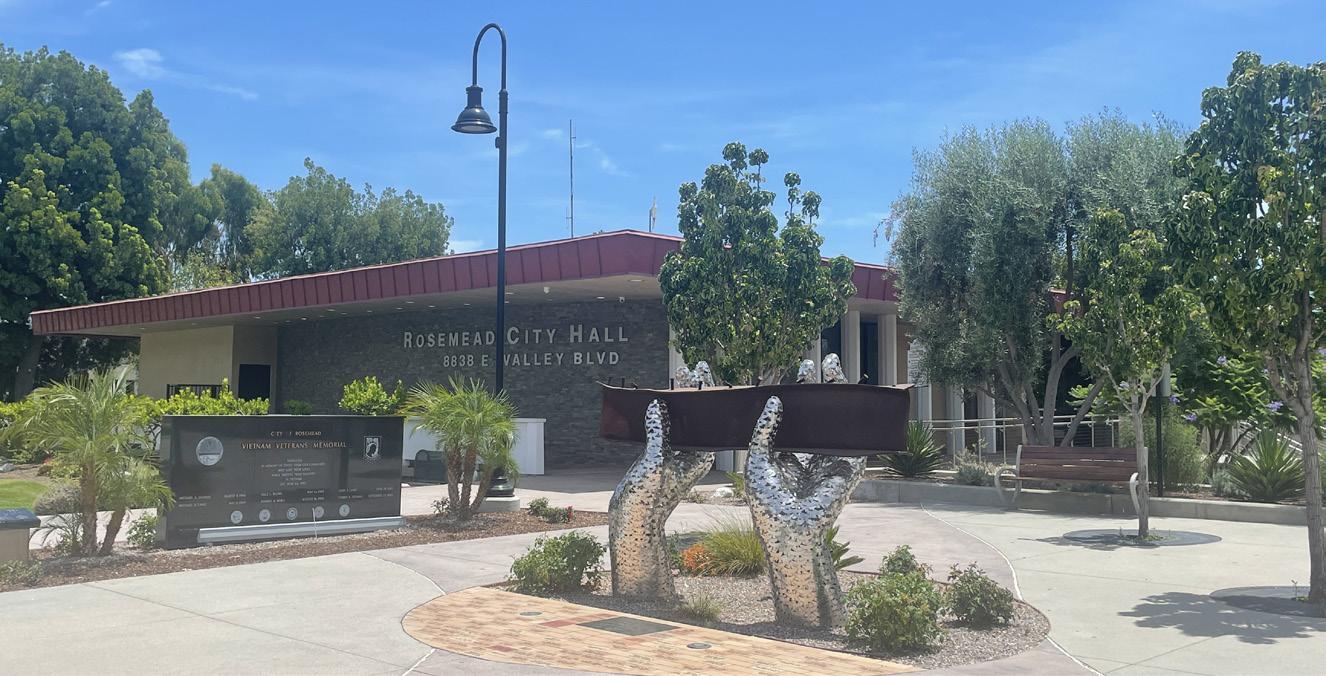

Alhambra is a city located in the San Gabriel Valley of Los Angeles County, California.
Monterey Park City Councilmembers









Monterey Park is a city located in the San Gabriel Valley of Los Angeles County, California. At the 2010 census, the population was 82,868.
Rosemead City Council members

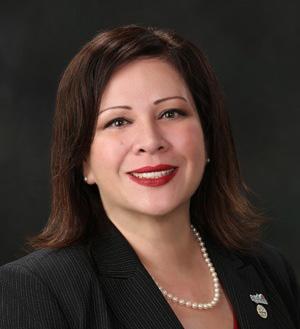

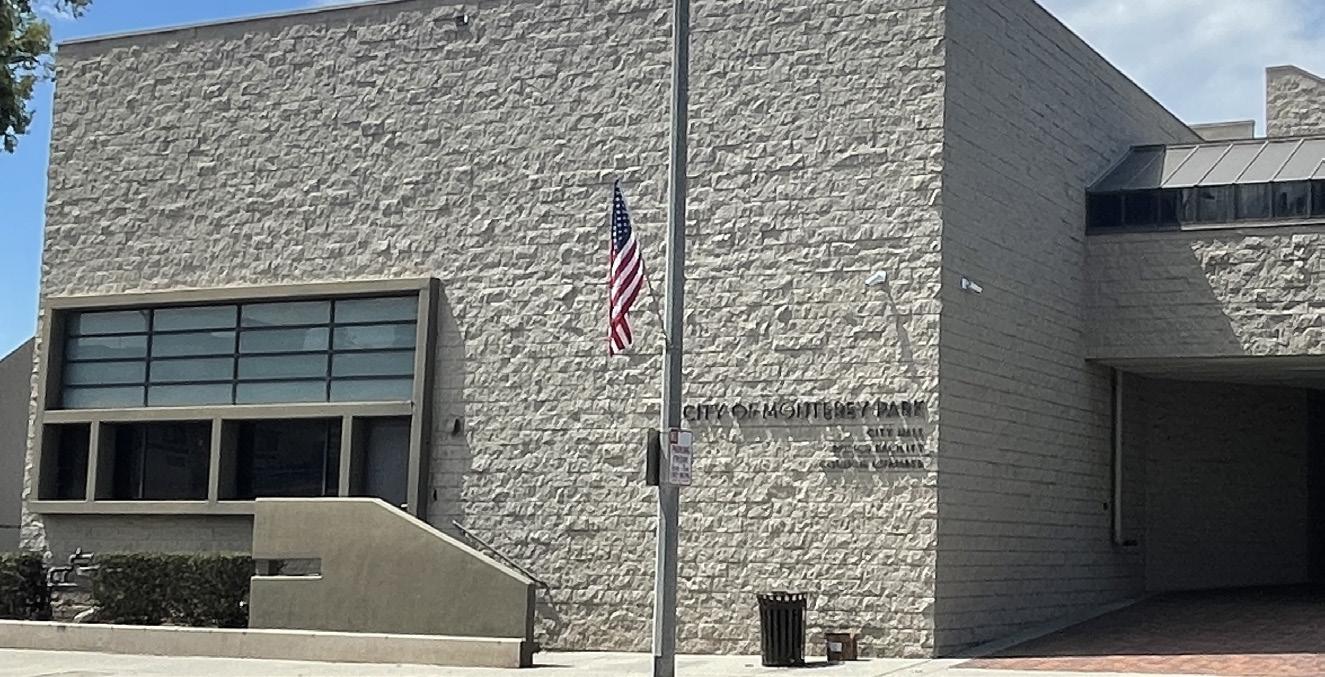

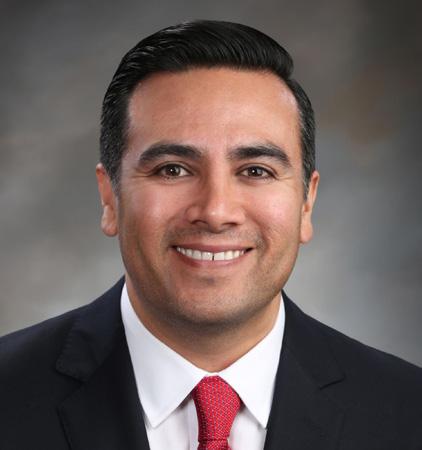
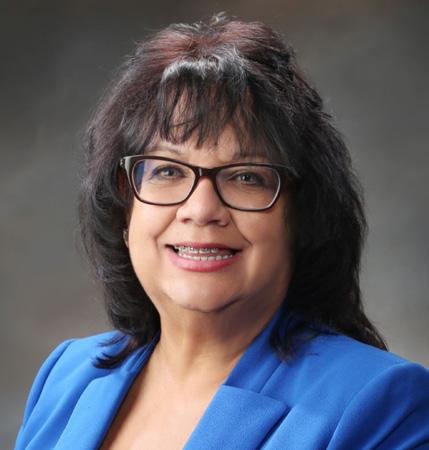
Rosemead is a city located in the San Gabriel Valley of Los Angeles County, California.

35
Alhambra City Hall
Jeffrey Koji Maloney Mayor, District 3
Adele Andrade-Stadler Vice Mayor, District 5
Katherine Lee Councilmember, District 1
Ross J. Maza Councilmember, District 2
Sasha Renée Pérez Councilmember, Disctrict 4
Monterey Park City Hall
Henry Lo Mayor Vacant Councilmember, District 3
Hans Liang Councilmember, At-Large
Peter Chan Councilmember, At-Large
Yvonne Yiu Councilmember, District 2
Rosemead City Hall
Sean Dang Mayor Steven Ly Mayor Pro Tem
Sandra Armenta Councilmember
Margaret Clark Councilmember
Polly Low Councilmember
San Gabriel City Councilmembers







Temple City City Councilmembers

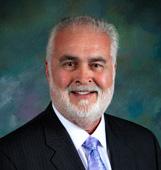

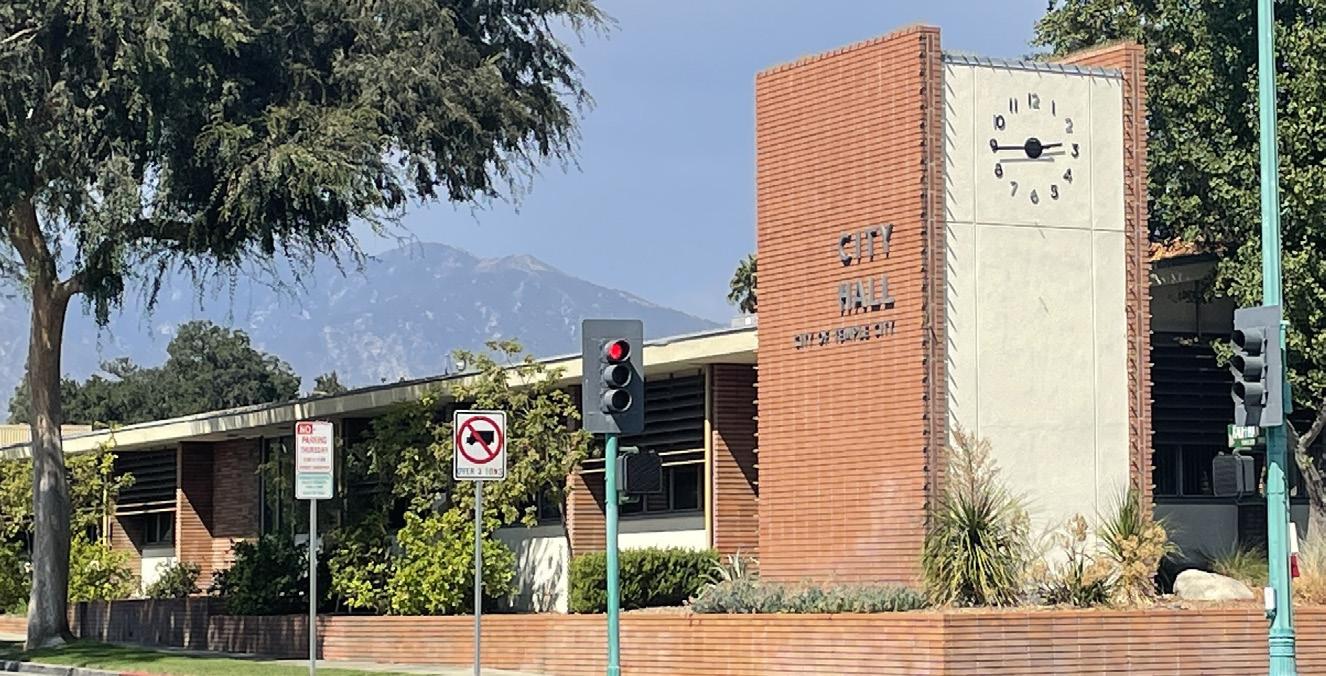


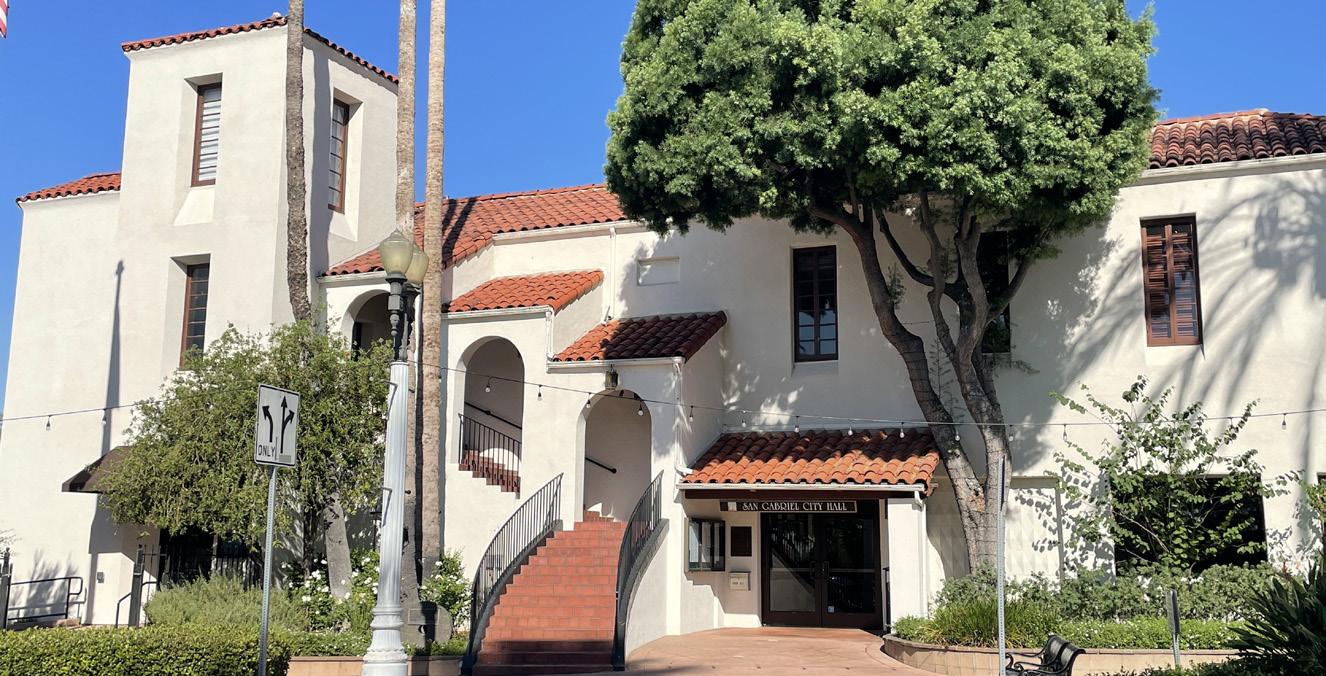
36
San Gabriel City Hall
Tony Ding Mayor
John R. Harrington Vice Mayor
Denise Menchaca Councilmember
Carina Rivera Councilmember
John Wu Councilmember
San Gabriel is a city located in the San Gabriel Valley of Los Angeles County, California.
Temple City City Hall
Cynthia Sternquist Mayor William Man Mayor Pro Tempore
Tom Chavez Councilmember Fernando Vizcarra Councilmember Vincent Yu Councilmember
Temple City is a city located in the San Gabriel Valley of Los Angeles County, California.
Mt. Wilson as Seen From the Rooftop of WSGVR & all City Hall Photos by Albert Tran
 By C.A.R., LOS ANGELES (October 18)
By C.A.R., LOS ANGELES (October 18)


























































 Cecelia Rudar President-Elect
Brian Chen Immediate Past President
Earl Knudson Director
Shun Zhang Vice President Yin Bihr Director Pauline Lam Director
Nanette Ong Treasurer Marian Cavataio Director Tom Tseng Director
Jeff Huang Secretary Lorraine Clark Director William Wei Director
Cecelia Rudar President-Elect
Brian Chen Immediate Past President
Earl Knudson Director
Shun Zhang Vice President Yin Bihr Director Pauline Lam Director
Nanette Ong Treasurer Marian Cavataio Director Tom Tseng Director
Jeff Huang Secretary Lorraine Clark Director William Wei Director







































